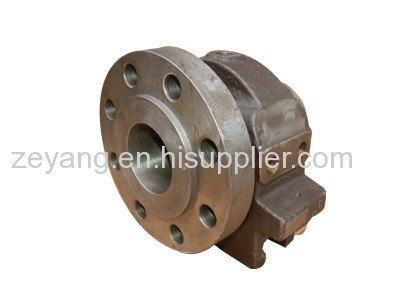|
Ningbo Zeyang Machinery Co., Ltd.
|
investment casting manufacturing factory
| Price: | 0.1~500.0 USD |
| Payment Terms: | T/T,L/C |
| Place of Origin: | Zhejiang, China (Mainland) |
|
|
|
| Add to My Favorites | |
| HiSupplier Escrow |
Product Detail
machanical parts, casting parts, sand castings, shell mold castings,lost wax castings
The Process of Lost wax casting:
1. Rough Sculptor making: A creative artist makes an original sculptor or mold or an artwork by using raw material like wax, plaster of Paris or clay. A mixture of oil based clay and wax is preferred as these materials retain their softness.
1. Rough Sculptor making: A creative artist makes an original sculptor or mold or an artwork by using raw material like wax, plaster of Paris or clay. A mixture of oil based clay and wax is preferred as these materials retain their softness.
2. Final Mold Making: A mold is then made as per the original sculptor. The mold is made up of two pieces and a key with shim is placed between the two pieces during construction so the mold can be put accurately back together. Molds are generally made using plaster or fiberglass or any other material that may be suitable. An inner mold of latex or vinyl or silicone is put pup preserve the details of the original art work. Generally, the original art work made of plaster mold cracks and breaks during the initial phase of deconstruction. Many a times, numerable molds are required to get the exact replica of the original art work.
3. Filling up the mold: Once the latex and plaster mold is complete and finished, molten wax is poured into the mold till it gets an even coating all around the mold. The thickness of the wax coating is around 1/8 inch. This process is then repeated until the desired thickness is achieved.
4. Removal of wax replica: The hollow wax replica of the original art work is then removed from the mold. The original mold can be used for making more wax replicas, but due to the wear and tear of the original mold the reuse of the mold is limited.
Softening: Each wax mold is then chased or softened using heated metal tools. The metal tools are rubbed around portions that show cracks or the joining line of the mold, where the pieces have come together. Separately molded wax pieces are then heated and attached. The finished mold is then dressed in order to hide any imperfections. The final piece then looks like a bronze sculpture.
5. Making paths for molten bronze: It is also known as "spuring", in short the wax copy is then branched with treelike wax, so that the molten bronze reaches the right parts and also it helps the air to escape. The critical and careful spuring begins from the top of the wax copy. The top of the copy is attached to by wax cylinders to different points on the wax copy.
6. Slurry, burnout, testing, pouring, release, metal-chasing, and painting are the final steps in the process of Lost Wax Casting.
If you want to get related Sand Casting, Die Casting, Forging, Precision Machining more detail information, please do not hesitate to contact with us!
Didn't find what you're looking for?
Post Buying Lead or contact
HiSupplier Customer Service Center
for help!
Related Search
Investment Casting
Steel Investment Casting
Precision Investment Casting
Investment Casting Stainless Steel
Investment Casting Part
Stainless Steel Investment Casting
More>>





